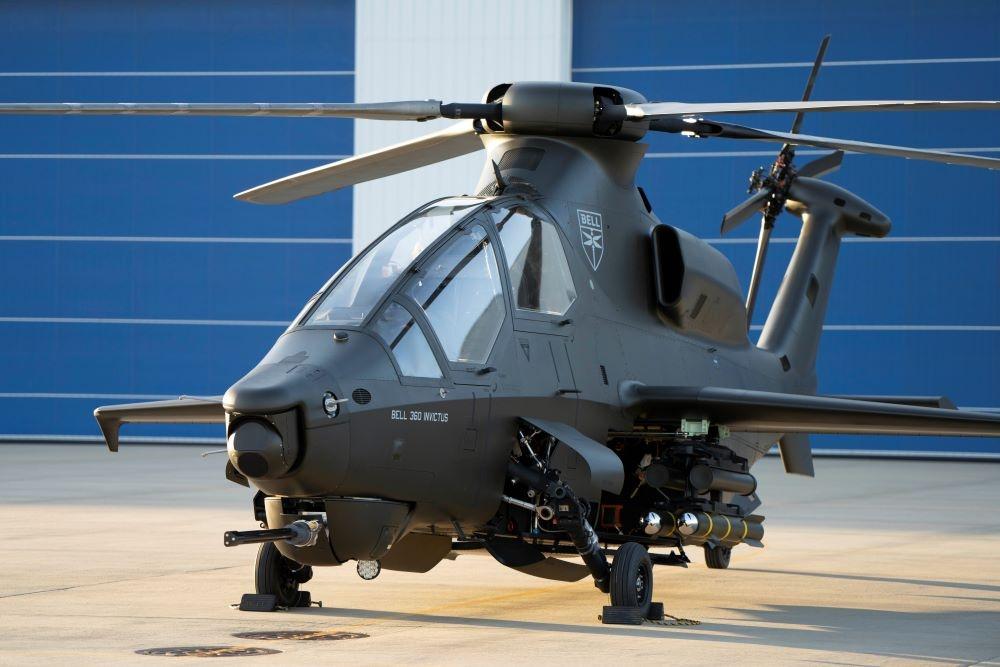News coverage of the Army’s plan to replace its cold war rotorcraft fleet has focused recently on selection of a successor to the ubiquitous Black Hawk helicopter.
Bell Textron’s
TXT
However, the Army is seeking a different rotorcraft called the Future Attack Reconnaissance Aircraft that it deems to be its highest aviation modernization priority.
FARA, as it is called, would field a new scout helicopter designed to operate well ahead of other Army units in war zones, seeking out enemy forces and assessing terrain from contested airspace.
Such scouting missions are dangerous, requiring the aircraft to fly below the tree line or in urban canyons. But that is often the only way to observe tactical movements and topographical details not visible to higher-flying aircraft or reconnaissance satellites.
Depending on circumstances, FARA may attack targets such as enemy air defenses when they are found, or it may simply report what it finds to other warfighters, thereby enabling them to better focus their warfighting plans.
Either way, Army leaders view low-flying recon missions as a critical capability—a capability they have sorely missed since the last dedicated scout helicopter known as Kiowa was retired in 2017.
Apache tank-killing helicopters supported by Shadow drones have filled the scout role since Kiowa’s retirement, but the Army wants a more permanent replacement that is faster, more agile, and capable of penetrating further into hostile territory.
Because FARA would likely be alone at the front of the battlespace, it needs to be more versatile and survivable than what came before.
And while the current competition, which will be decided in 2025, is about choosing the best airframe, Army managers view the program as more than that; they see FARA as an integrated weapons system.
That means investing in onboard sensors, small drones capable of extending the aircraft’s reach, a new generation of air-launched munitions and, most importantly, a modular open systems architecture.
The modular open-systems architecture—MOSA in engineering shorthand—ties together all the onboard systems that support the mission, and facilitates modifications when emerging threats dictate further refinement of the design.
Army planners want an architecture that can readily accept new digital innovations to enhance aircraft performance without being overly dependent on the company that manufactured the aircraft (“vendor lock” in military jargon).
The most critically important mechanical feature of FARA will be its General Electric 901 engine, the powerplant that allows it to fly farther and faster than pre-existing powerplants.
GE won a separate competition to develop the engine, which was delivered to the competing aircraft teams on October 20.
The two teams, one led by Bell Textron and the other by Lockheed Martin
LMT
Army planners strongly favor development of prototypes in order to identify possible design issues early in the process. Development and testing need to unfold smoothly if FARA is to begin reaching the force early in the next decade.
The winning design will include numerous features not present on current Army helicopters, including fly-by-wire controls, internal carriage of munitions, and various measures aimed at minimizing “signatures”—noise, heat, radar returns, etc.
Much of this is classified, but the goal is clear enough—field a scout helicopter with unprecedented survivability, versatility, connectivity and sustainability. That’s what the Army needs to stay ahead of the evolving threat.
Some observers have argued that the attack recon mission should be performed in the future by unmanned rather than manned aircraft. FARA meets that expectation to some extent by incorporating “air-launched effects”—small drones with diverse uses—in its design.
However, it will be some time before a fully unmanned solution to scouting in hostile territory is feasible. AI isn’t there yet, and the Army needs a new scout now.
So, the service is pushing ahead with its FARA plan, confident that it knows what warfighters will require in the 2030s and beyond. FARA is likely to remain the Army’s top aviation modernization priority for the rest of the decade.
Disclosure: FARA competitors Lockheed Martin and Textron contribute to my think tank, the Lexington Institute.
Read the full article here





